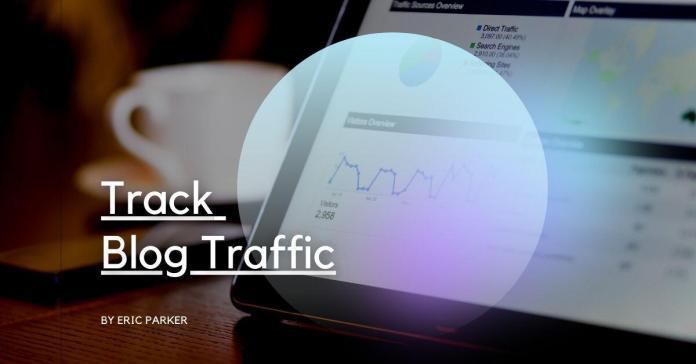If you’re new to blogging, have you wondered “How do I track blog traffic?” There are a few tools that will help you do this, including Moz Link Explorer and Google Analytics. These tools allow you to see important statistics on your visitors, such as impressions and pageviews. You can even see how long visitors spend on your site!
Moz Link Explorer
One of the best ways to track blog traffic is by using a tool called Moz Link Explorer. This tool, which was previously called Open Site Explorer, gives you a wealth of SEO data. With it, you can map out your link profile, identify content types that work, and discover any gaps or opportunities. With it, you can also learn how to improve your PPC campaigns and backlink profile.
This SEO tool works by automatically updating data every 24 hours. It also tracks domain authority scores for every website. The tool also comes with impressive dashboards for SEO analysis. Simply type in the URL of your blog or website and Moz will show you your SEO metrics. You can also enter the root domain, which shows the metrics for the entire site.
One of the most important metrics to track for your blog is inbound links. Moz Link Explorer allows you to see which posts receive the most inbound links, allowing you to determine which content resonates with your readers. In this day and age, engagement takes many forms online, so the key is to find what kind of engagement is valuable to your readers.
In addition to the domain authority score, you can use page authority to understand the overall performance of your website. Page authority is a measure of a website’s ability to rank in search engines. Moz uses a logarithmic scale to assess page authority. The higher your page authority score is, the more likely it is that you will rank high in search engine results pages.
Pageviews
One of the most important statistics to track when you’re tracking blog traffic with Google Analytics is pageviews. Pageviews represent the time that the user views a particular page. Typically, this occurs when a user clicks enter to enter a site, but it can also happen when they visit the same page more than once. If you want to understand how many pageviews a user has, it’s important to understand how each pageview is calculated.
To track blog traffic with Google Analytics, you can create a Google account and connect the account to your website. This will automatically create a property for your site, which is a unique tracking code that needs to be pasted in your website’s header or footer file. This code will begin collecting data within 24 hours.
You can analyze the pageviews by looking at the behavior segment. This allows you to see which URLs and pages receive the most attention. For example, a page with a high number of pageviews could be confusing to readers. To determine what your users’ preferences are, you should analyze your page views using the traffic analysis tool.
Another way to analyze blog traffic is to look at the conversion rate. This metric tells you how influential each page is in the conversion process. The higher the conversion rate, the more frequently someone viewed a page before making a purchase. The conversion rate is calculated by applying a goal conversion value to all pages, and attempts to correlate pages to conversions. Pageviews are a key measure of blog traffic and can provide valuable insight for both bloggers and corporate website managers.
When tracking blog traffic with Google Analytics, you can analyze the number of pageviews a visitor generates by viewing a page. Google Analytics can help you understand how your blog is doing and what to do to improve it. It’s not just about the number of visitors, but also the quality of each page.
Impression
If you have a blog, it’s important to know how many people are visiting your website. You can use Google Analytics to find out more. Using this tool will allow you to see how many people have viewed your site and which of those visitors are returning to read more. Moreover, it will also show you how many unique visitors your website has. This information can be very helpful in getting more traffic for your blog.
Using Google Analytics, you can determine how successful your blog is by looking at your audience. You can determine which posts are receiving the most attention. Using the overview report, you can see the overall blog metrics for a certain period of time. For example, the Overview report in MonsterInsights will automatically display data for the past 30 days, but you can customize it to suit your needs. The overview report will show you how many people are visiting your blog on a given day. Aside from that, you can also view how many people are coming back to your blog over a period of time. This information will tell you whether your blog is working and whether it’s attracting more visitors than it’s making.
Another way to track your blog traffic is to check your average number of pages per visit. The average number of pages per visitor is an indicator of how much time a visitor spends on your site. It can be very useful for determining where a post ranks for targeted keywords. You can also look at referral data, which shows which websites link back to your website. This can help you determine which websites are valuable in driving traffic to your website.
The data in Google Analytics can help you make better decisions on your blog. It can also help you see which posts are getting more attention and social shares. You can improve the subject matter of these posts, or add additional information to them. You can also increase the frequency of posting on your blog.
Time on page
Time on page is an important metric when tracking blog traffic in Google Analytics. More than half of all site visitors spend at least a few seconds on a page, and Google has shown that longer sessions result in higher spending and paying customers. To improve your time on page, use relevant content and provide a positive user experience.
The average time spent on a page depends on the type of content on a page. In general, product pages and blog posts should last longer than other types of content. A recent study by Databox found that blog posts should have a time on page between three and five minutes. However, the average time on page will vary depending on the content of the page and its audience.
Time on page can be useful in a variety of contexts. It can be used to track overall page views, as well as individual blog posts. The longer a visitor stays on a page, the more likely they will take the next step, such as subscribing to your mailing list or purchasing something. In an ideal world, every visitor would convert immediately.
Time on page is often confused with average session duration. The two metrics are not the same, but are important indicators of how long a user stays on a web page. Time on page measures the time a user spends on a page, excluding bounces and exit pages.
Time on page is a useful metric for tracking blog traffic in Google Analytics. It allows you to see the overall time spent on a page and whether the time spent on a page is longer or shorter than average. Google Analytics offers different reports on session duration, including the Behavior Overview Report and All Pages Report. This is an important factor that you can also include in your SEO client report.
Conversion rate
If you are using Google Analytics to track your blog traffic, you can easily measure the number of visitors and the conversion rate. The first metric you should monitor is page views, which tells you how many people visit your blog. This number also accounts for multiple visits and page refreshes. You can also track page views through your hosting provider. DreamHost, for example, offers a page views tracking tool in its user dashboard.
Conversion rates can also help you determine the effectiveness of your marketing campaign. For example, if you write a post about a new product, you should keep track of the conversion rate for that post. The conversion rate of your blog’s posts is an important metric for content marketing. If it’s low, you can try to improve your content or increase your readership.
Another metric to consider is assisted conversions, which are interactions that take place before a conversion is made. This information can help you understand how your blog generates revenue. For instance, a visitor might sign up for a newsletter, download a PDF, or click on a link to a landing page. If your conversion rate is low, it’s important to improve your website’s user experience and clarify what steps customers should take after landing on your page.
You can also monitor user conversion rates by using Google Analytics. However, remember that the conversion rate on a user level is different from the session level. For instance, if a user makes a purchase and makes several visits to a product page, the conversion rate on a user level will be much higher.
You may also want to read,








